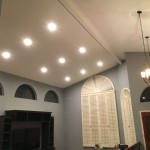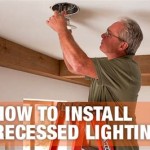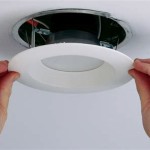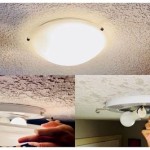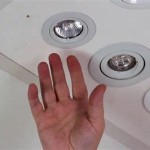Essential Aspects of Installing Lights in Suspended Ceilings
Suspended ceilings offer a modern and functional solution for various commercial and residential spaces. Installing lights within these ceilings enhances their functionality and aesthetic appeal. However, careful consideration of several essential aspects is crucial to ensure a successful and safe installation process. This article explores these key considerations to guide you through the essential aspects of installing lights in suspended ceilings.
1. Lighting Type and Placement:
The choice of lighting fixtures depends on the specific application and desired ambiance. Recessed downlights and linear fixtures are popular options for suspended ceilings. They provide ample illumination while remaining discreet and complementing the ceiling's design. Consider the placement of lights to ensure uniform distribution and avoid glaring or dark spots.
2. Wiring and Electrical Considerations:
Proper wiring is essential for the safe operation of lights in suspended ceilings. Use electrical cables with appropriate ratings and follow the manufacturer's guidelines for installation. Ensure that wiring is securely concealed within the ceiling grid to maintain safety and aesthetics. Employ the services of a qualified electrician to handle electrical connections and ensure compliance with building codes.
3. Ceiling Structure and Grid System:
The type of suspended ceiling system influences the installation method. Grid ceilings require careful planning to accommodate light fixtures. Determine the location of support wires above the ceiling tiles to avoid drilling into them. Use specialized anchors or hangers designed for suspended ceilings to ensure secure fixture mounting.
4. Access and Maintenance:
Consider future maintenance and accessibility when installing lights. Choose fixtures with removable lenses or covers to facilitate bulb replacement or cleaning. Plan for easy access points within the ceiling grid to allow for convenient fixture removal and maintenance.
5. Ventilation and Heat Management:
Recessed lights can generate heat, especially if they use high-wattage bulbs. Ensure adequate ventilation by providing sufficient clearance around fixtures or installing ventilation grilles within the ceiling grid. Proper heat dissipation voorkoms damage to the ceiling tiles and fixtures, ensuring their longevity.
6. Building Codes and Safety Regulations:
Adhere to all applicable building codes and safety regulations when installing lights in suspended ceilings. This includes using fixtures that meet specific fire resistance ratings and employing proper grounding techniques. Consult with local authorities to obtain the necessary permits and ensure compliance with safety standards.
By carefully considering these essential aspects, you can ensure a successful and professional installation of lights in suspended ceilings. These considerations will enhance the functionality, safety, and aesthetic appeal of your space for years to come.

How To Install Recessed Lights In A Drop Ceiling The Home Depot

Install Lighting In A Suspended Ceiling Doityourself Com

Suspended Ceiling Installation Ceilings

Drop Ceiling Installation How To Install A Homeserve Usa

How To Install A Led Panel Light 5 Step Quick Guide Any Lamp

Drywall Suspended Grid Showroom Ceiling Systems How To Install Pictures Of Tips For Installing Drop Ceilings Strictly Racine Wisconsin

Heradesign Suspended Ceiling Installation John Atkinson

Diy Recessed Lighting Installation In A Drop Ceiling Tiles Prep Work Super Nova Adventures

Installing Woodhaven Planks And Hiding Drop Ceiling Grid Sawdust Girl

Diy Recessed Lighting Installation In A Drop Ceiling Tiles Part 3 Super Nova Adventures
Related Posts

